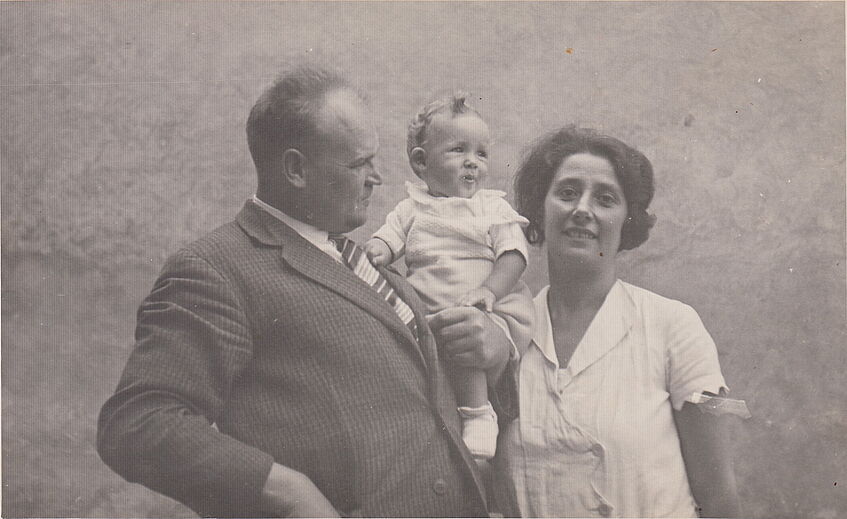Everyday Life and Persecution of “Mixed Families” during the Nazi Regime in Vienna, 1938-1945

Johann Metschl und seine jüdische Ehefrau Stefanie (geb. Schulhof) mit ihrer gemeinsamen Tochter Susanne, Wien um 1932. Ⓒ Privatbestand Susanne Metschl
Everyday Life and Persecution of “Mixed Families” during the Nazi Regime in Vienna, 1938-1945
Project lead: Mag.a Dr.in Michaela Raggam-Blesch
Financing: Elise Richter-Programme (FWF), Marie Jahoda Stipend (University of Vienna), Fondation pour la Mémoire de la Shoah (Paris)
Duration: 01.07.2017-30.10.2023
This project focuses on the everyday life and persecution of «mixed families» during the Nazi regime in Vienna. In the context of National Socialist race ideology, marriages between Jews and Gentiles as well as the presence of their «half-Jewish» descendants represented a threat to the integrity of the Nazi regime. In the context of the so-called «Final Solution», this «unsolved problem» played an important role at the Wannsee conference and its follow-up meetings in March and October of 1942. For hardliners, no «solution» could be «final» without «solving» the «Mischling problem». Internal differences within the Nazi party and concerns that Aryan family members would cause or spur public unrest ultimately spared this group from the full force of the radical measures applied to the general Jewish population, even if plans for the ultimate inclusion of «half-Jews» and Jewish partners of «mixed marriages» in the Final Solution were never abandoned. This project with its microhistorical setting positions itself within international theoretical debates of Holocaust studies. It follows Saul Friedländer and his concept of an integrated history, where the persecuted are taken seriously as individuals and where their perspective is taken into account as much as the actions of the perpetrators. Considering the massive scale of the Nazi genocidal program, the fact that the Holocaust was also an intimate history shaping the relationships between individuals easily gets lost from sight. Research on «mixed families», who by definition navigated between Jewish and non-Jewish worlds, thereby also enhances our understanding of the intricacies of interpersonal relations during the Holocaust.
